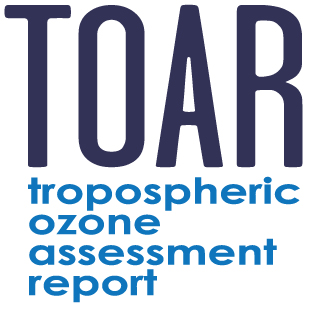OPT Focus Working Group

Working Group leads: Audrey Gaudel, CIRES University of Colorado Boulder, USA (audrey.gaudel @ noaa.gov)
Bastien Sauvage, Université de Toulouse, CNRS, France (bastien.sauvage @ aero.obs-mip.fr)
TOAR-II Steering Committee liaison: Raeesa Moolla, University of the Witwatersrand, South Africa (Raeesa.Moolla @ wits.ac.za)
Established: November 10, 2020
The Ozone and Precursors in the Tropics (OPT) Focus Working Group has the following objectives:
The tropics encompass 40% of the Earth's surface with 40% of the world's population, which is expected to exceed 6 billion inhabitants by 2050 (https://www.jcu.edu.au/state-of-the-tropics). Tropospheric ozone (O3) has increased in the northern hemisphere during the past two decades even at mid-latitudes despite emissions controls of ozone precursors such as NOx and VOCs (Gaudel et al., 2020). This rise seems to be partly caused by the increase of anthropogenic emissions in the tropics where sunshine is plentiful, ozone production efficiency is high and where deep convection is efficient to recirculate polluted air towards higher latitudes (Zhang et al., 2016; Gaudel et al., 2020). Natural sources (lightning, soil, and biomass burning emissions) in the tropics are also active and participate in ozone budget and ozone production efficiency (Sauvage et al., 2007a; 2007b). However, there are still large gaps in understanding ozone variability and changes throughout the tropical troposphere and the exchange between the tropics and extratropics.
To address these knowledge gaps, the OPT Focus Working Group will:
- a) Quantify the seasonal and interannual variability of ozone and its precursors across the tropical band.
- b) Assess the ozone budget within the tropics, and its main uncertainties related to anthropogenic and natural sources (gas and aerosols) and climate variability (ENSO, MJO,...).
- c) Assess the impact of tropical pollution on air quality in local and remote tropical regions, as well as subtropical and mid-latitude regions.
- d) Quantify the degree to which the tropical tropospheric ozone increase affects the global tropospheric ozone burden.
- e) Quantify the radiative forcing due to tropospheric ozone increases in the tropics and its contribution to ozone's global radiative effect.
References:
Gaudel A., Cooper O.R., Chang K.-L., Bourgeois I., Ziemke J.R., Strode S.A., Oman L.D., Sellitto P., Nedelec P., Blot R., Thouret V., Granier C. (2020). Aircraft observations since the 1990s reveal increases of tropospheric ozone at multiple locations across the Northern Hemisphere, Science Advances, Vol. 6, no. 34, eaba8272, DOI: 10.1126/sciadv.aba8272 2020.
Sauvage, B., Martin, R. V., van Donkelaar, A., and Ziemke, J. R.: Quantification of the factors controlling tropical tropospheric ozone and the South Atlantic maximum, J. Geophys. Res. Atmos., 112, https://doi.org/10.1029/2006JD008008, 2007a
Sauvage B., Martin R.V., van Donkelaar A., Liu X., Chance K., Jaeglé L., Palmer P.I., Wu S. , Fu T.-M. : Remote sensed and in situ constraints on processes affecting tropical ozone, Atmospheric Chemistry and Physics, 7, 815-838, 2007b.
Zhang, Y, Cooper, OR, Gaudel, A, Thompson, AM, Nédélec, P, et al. 2016 Tropospheric ozone change from 1980 to 2010 dominated by equatorward redistribution of emissions. Nature Geoscience . DOI: 10.1038/ngeo2827
Further details on the goals of this working group can be found here (pdf for download)